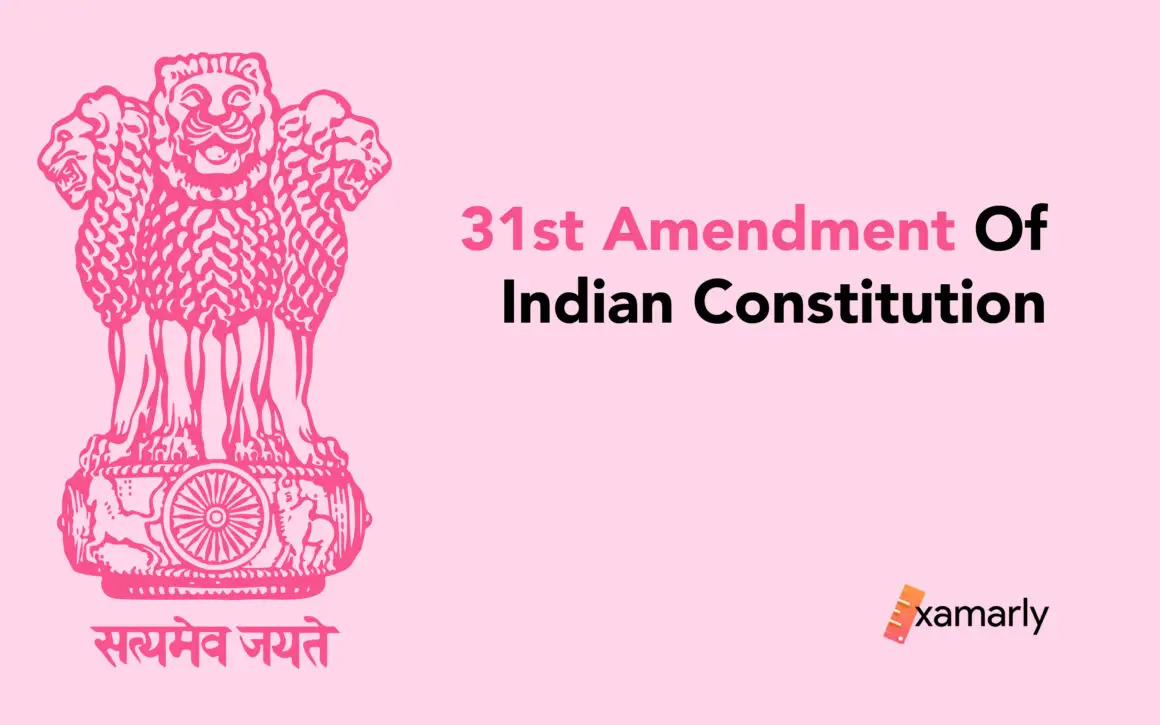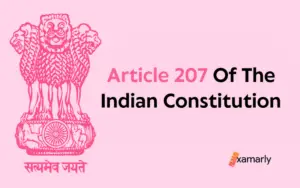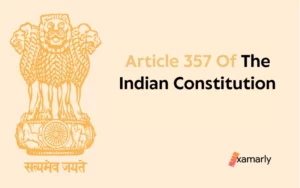The Lok Sabha now has 545 seats, up from 525 thanks to the 31st amendment of Indian Constitution. India’s population was disclosed in the 1971 census, which was the primary driver of this revision. The adjustment increased the allocation of seats to the newly created states in North East India and a minor modification because of the delimitation exercise in 1971. In addition, there are now 20 rather than 25 UTs represented in the House of the People.
Read this article to get in-depth knowledge about the 31st amendment of Indian constitution.
31st Amendment Of Indian Constitution
The 31st Amendment of the Constitution of India is officially termed The Constitution (Thirty-first Amendment) Act, 1973. On 17 October 1973, the 31st Amendment came into effect. Articles 81, 330, and 332 were amended by this.
Main points:
- Increased the number of Lok Sabha seats from 525 to 545. The country’s population growth was the reason for this.
- Reduced the representation of Union Territory in Lok Sabha from 25 to 20.
- A modest modification as a result of the 1971 Delimitation exercise and more seats going to the new states created in North East India.
- Article 330 of the Indian Constitution was held inapplicable for the tribal areas of Meghalaya, Mizoram, Nagaland, Arunachal Pradesh; and Assam due to their significant tribal population.
- Assam, Nagaland, and Meghalaya’s tribal regions were also found to be under the exclusionary rule of Article 332.
Objects And Reasons
- Lok Sabha must have no more than 500 members, who must be elected directly from State territorial constituencies, according to clause (1) of article 81 of the Constitution. A maximum of 25 members may be chosen in accordance with the laws of Parliament to represent the Union territory. After the North-Eastern Areas (Reorganisation) Act of 1971 was passed, the total number of Lok Sabha seats allotted to the States rose to 506 seats (81 of 1971). The permissible limit of 500 seats is increased by six as a result of this. There are 522 elected members in the current Lok Sabha.
- For subclause (a) of clause (1), clause (2) of article 81 of the Indian Constitution stipulates that each State shall be allotted a certain number of seats in the House of the People in a way that, to the greatest extent possible, maintains a ratio between those seats and the population of the State. The same applies to all States, and each State shall be divided into territorial constituencies so that, to the maximum degree feasible, the population-to-seat ratio in each constituency is the same throughout the State. According to clause (3) of Article 81, the population is defined as that which was determined during the most recent census for which the relevant figures have been published. After every census, the number of seats in the House of the People allocated to each State and the partition of each State’s territory into constituencies must be modified. This is stated according to Article 82, readjustment is done in the manner that Parliament may by law determine. Parliament had passed the Delimitation Act, 1972 in pursuance of article 82. The Delimitation Commission was established to carry out the essential function of the readjustment envisioned in article 82. It should be noted that the Delimitation Commission’s adherence to the principles outlined in clause (2) of article 81 when carrying out the readjustment required by article 82 based on the results of the 1971-census figure may have an impact on the number of seats allotted to the States in the Lok Sabha. The consensus is that it would be preferable to make sure that any adjustments and consequent allocation of seats don’t negatively impact the current number of seats assigned to each State in the Lok Sabha.
- Clause 2 of the Bill aims to modify article 81 to raise the maximum limit for representation of the States from 500 to 525. As there is currently only 16 representation for Union territory, the opportunity was used to lower the maximum from twenty-five to twenty. The government believes in amending clause (2). This was done to ensure that no State, as long as its population does not exceed six million, will be subject to the provisions of subclause (a) of clause (2) of article 81. This is done in order to maintain the representation of the smaller States in the Lok Sabha which was indicated in the preceding paragraph (stated in point 1).
- The Constitution’s Article 330 deals with the Lok Sabha’s reserved seats for Scheduled Castes and Scheduled Tribes. 88.6% of Nagaland’s population is comprised of Scheduled Tribes, according to the 1971 census. The similar percentages are 80.5%, 79.0%, and 94.3% for the state of Meghalaya and the union territories of Arunachal Pradesh and Mizoram. The government believes that the largely tribal units of Arunachal Pradesh, Meghalaya, and Mizoram should not be subject to the provisions of this article. Like in the case of Nagaland, it is believed that there is no need to reserve seats for scheduled tribes in the state of Meghalaya’s legislative assembly and that article 332 of the Constitution may be appropriately changed. The Bill’s clauses 3 and 4 aim to accomplish these goals.
History Of The Lok Sabha’s Representatives
- The first Lok Sabha was established on April 17, 1952. Then it had a total of 489 members. This amount increased to 494 in the second and third and 520 members in the fourth and fifth Lok Sabha.
- During the 5th Lok Sabha, the 31st amendments of Indian Constitution were brought, then the number of seats was 520. To make it 545 seats total, 25 additional seats were added to this. Current seats are also 545 in number. Up to that point, nothing had altered in this aspect.
- The sixth Lok Sabha election results showed this change in the seat. This was observed in 1977.
Also Read: Powers And Functions Of Lok Sabha and Rajya Sabha
Constitutional Provision
31st amendment of Indian Constitution amended articles 81, 330, and 332 of the Constitution.
Amendment of article 81 – As stated in the Constitution’s Article 81,
(I)Clause (I) of this Article is amended-
(a) to raise the maximum limit for representation of States in the Lok Sabha from five hundred members to five hundred and twenty-five members.
(b)to bring down the upper limit for the representation of Union Territories from twenty-five to twenty.
(ii) Further, a proviso is added to clause (2), following sub-clause (b), to state that the provisions of sub-clause (a) of clause (2) shall not apply for allotment of seats in the Lok Sabha to any State if that State’s population does not exceed six million.
Amendment of article 330–
- Section 3 amends article 330, relating to the reservation of seats for Scheduled Castes and Scheduled Tribes in the House of the People. Sub-clause (b) of clause (1) of article 330 is amended to make the provisions of that article inapplicable to Mizoram, Arunachal Pradesh, and Meghalaya also.
- To ensure that the number of seats reserved in the House of the People for the Scheduled Tribes in the autonomous districts of Assam retains a proportion not less than the population of the Scheduled Tribes in the said autonomous districts bears to the total population of the State, clause (3) is inserted after clause (2) of that article.
- The revision to article 330 of the Constitution made by sub-clause (1) will not affect any representation in the Lok Sabha until the dissolution of the Lok Sabha in existence at the time this Act was passed.
Amendment of article 332-
- Section 4 substitutes the words “except the scheduled Tribes in the tribal areas of Assam, in Nagaland and Meghalaya” for the words “except the Scheduled Tribes in the tribal areas of Assam and Nagaland” in clause (1) of article 332 to dispense with the necessity of reserving seats for Scheduled Tribes in the Legislative Assembly of Meghalaya also.
- However, this Amendment shall not affect any representation in the Legislative Assembly of the state of Meghalaya until the dissolution of that Legislative Assembly existing at the commencement of the present act.
Conclusion
The number of Parliament seats was the main focus of the 31st Amendment of Indian Constitution. Currently, the Lok Sabha has 545 seats. Additionally, The Rajya Sabha has 245 members. The 31st Amendment went into force on October 17, 1973. Since that time, the number of each house’s representatives is constant.






